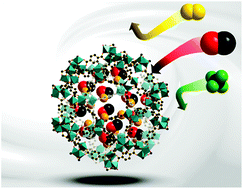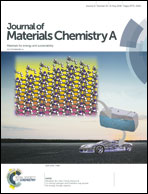Incorporation of Cu(ii) and its selective reduction to Cu(i) within confined spaces: efficient active sites for CO adsorption†
Abstract
Cu(I)-containing materials have great potential in various applications such as in CO adsorption; however, development of an efficient and controllable method to produce Cu(I) sites remains a significant challenge; herein, a two-step double-solvent (DS) strategy is reported for the first time to fabricate Cu(I) sites in a representative metal–organic framework, MIL-101(Cr); this strategy ensures that both introduction of the Cu(II) precursor and its reduction to Cu(I) occur inside the pores and significantly minimizes the aggregation of Cu species. This is difficult to realize through conventional methods used for Cu(II) introduction (wet impregnation) or reduction (liquid-phase reduction). The two-step DS strategy involves selective reduction of Cu(II) to form Cu(I) without the formation of any Cu(0). The obtained Cu(I)-containing materials exhibit an excellent CO adsorption capacity (up to 2.42 mmol g−1) at 298 K and 1 bar, much better than that of the benchmark adsorbents including CuCl/γ-Al2O3 (1.0 mmol g−1), CuCl/MCM-41 (0.57 mmol g−1), and CuZSM-5 (0.11 mmol g−1).



 Please wait while we load your content...
Please wait while we load your content...